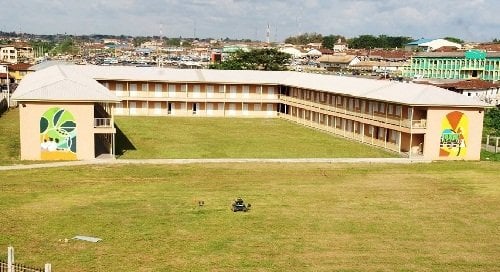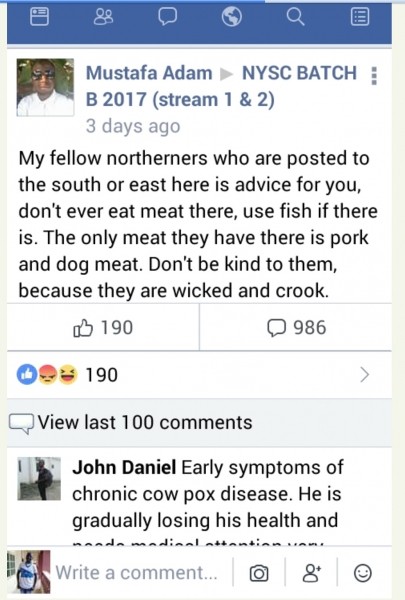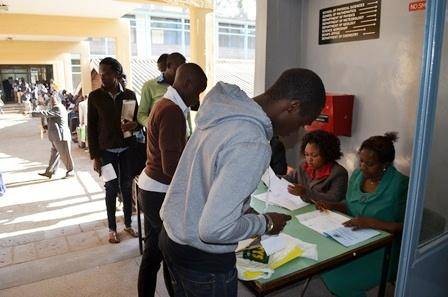
The State of Osun Silent Revolution in Education Sector:
Commissioning of Salvation Army School, Osun
Something interesting is happening in Osun State, and its is in the education sector. As someone from outside this state I recently took time to follow developments in that state and I encourage others who are so interesting to follow my cue. Based on basic research and direct visitation, I can say with confidence that, in all ramifications, the state towers well above all other states of the Federal in addressing the educational needs of their citizens.
This is in spite the fact that Osun ranks 34th among the 36th states of the Federation on the revenue allocation chart table. I understand that the governors reasoning is erected on the claims that “the only way to conquer and banish abject poverty from humanity is through conscious education of the mind towards productive engagement, which in turn will trigger creativity and productivity that will meet the basic needs of man”. This Awoist proposition is poking a finger at the recent UNESCO report which says 10.5 million Nigerian children have no access to basic education.
To reinforce a believe that paving access to education for all kids regardless of their social status, Mr. Aregbesola is quoted as saying that a nation perishes that deadened her resource to the growth of basic, accessible and affordable education. “Nation being is first and foremost her educational being and every other thing revolves around it, without which the nation perishes or hangs in the precipice of under develop cliff.”
Similar Posts:
- Universal School of Aviation (USA) Matriculation Ceremony Schedule
- Price of WAEC GCE Scratch Cards & Selling Points
- 45,000 Apply for 2,000 Teaching Positions in Ogun
- FG Suspends Evaluation of Degrees from Benin and Togo
- Universal School of Aviation (USA) Convocation Ceremony Schedule
Interestingly, his efforts have yielded tremendous result with the renovation of dilapidated schools structures and building of model schools to replace the decrepit ones that previously dignified places where pigs and other animals are reared. When I visited the state, it made sense to me that when pupils and parents are applauding the governor; some purchased crowd of propagandist did not make this up. They are compelling him to do more.
The governor has committed whopping billions of Naira into the Elementary and Middle School levels’ buildings that will each accommodate 900 pupils. The High School buildings will have capacity for 3,000 students. The state has almost delivers a 100 of such buildings at the Elementary, 50 at the Middle, and 20 at the High school levels; making a total of 170 in all, in his first term in office.
Even the most enthusiastic among us has given up that, on a national level, the country can meet the UNESCO set standard for compulsory education by 2030 to eliminate excruciating and crushing poverty. My journey to Osun encourages me to believe that with a visionary leader and the right political will, even this tall goal is achievable.
The Middle Level is from Primary 4 to Junior Secondary School 3 (JSS 111) for pupils aged between 10 to 14, now classified as Grades 5 to 9. At the High School Level, the age range is between 15 and 17 years, corresponding with Senior Secondary School (SSS III), to be known as Grades 10-12. The schools design is so perfect that no residents, group, organisation, individual, religious or interest would suffer as a result of the school reform.
It is impressive for me how this social sector becomes another engine for job creation. The state has, now employed some 3,000 women who have been co0king for the Elementary feeding programme, in addition to the gains agricultural schemes of his administration that has brought the production capacities of farmer-suppliers of farm produce, as well as the poultry and beef inputs for the food menu. The pupils feed on eggs, chickens, fish and red meat to enable them meet nutritional requirements for mental development.
In addition to the free education policy of the state government where the West African Examination Council (WAEC) and the Joint Admission and Matriculation Board (JAMB) are paid for, Governor Aregbesola has established Omoluabi Garment Factory in the state that caters for school uniform needs of the students across the state. With this, parents who would have otherwise bothered themselves about school uniforms for their wards have swiftly enrolled them in schools across the state without buying uniform for them since it has been provided for by government.
When, two months ago, Mr. Aregbesola was honoured by the Yoruba Education Trust Fund, YETFUND, as the best governor of the year in the South West, this made sense. Here, in true measure, was a man who has dedicated the largest chunks of his budgetary allocation, proportionately to the promotion and development of education for actual growth of the Yoruba people in particular, in so short a time.
The group singled out the award winning Opon Imo (Tablet of Knowledge) as the basics for the education excellent award bestowed on the governor. The technology wonder is in a class of its own! The tablet is preloaded with seventeen (17) subjects offered by students in the West African Senior Secondary Certificate Examinations (WASSCE). The subjects have been designed in forms of lesson notes, textbooks, mostly provided by publishers and master teachers’ inputs. Content verifiers, who happened to be some of the local teachers, were also made to verify lesson notes on each subject. Besides, seven extra-curricular subjects, such as Sexuality Education, Civic Education, Yoruba History, Ifa Traditional Religion, Computer Education and Entrepreneurship Education, and Twelve Thousand Yoruba Proverbs were also included.
Test platform for students’ self assessment to monitor their own comprehension and mastery of the subject, including 10 years past questions and answers provided by the Joint Admission and Matriculation Board (JAMB) and the West African Examinations Council (WAEC), as well as questions and answers in 17 (Seventeen) ordinary level subjects .The subject are English Language, Mathematics, Agricultural Science, Economics, Principles of Accounts, Literature in English, Physics, Chemistry, Biology, Yoruba, Commerce, Further Mathematics, History, Geography, Government, IRK and CRK. Audio tutorials were also embedded in the Opon-Imo to further aid students through virtual study plan.
The state, therefore has saved a whopping N8.4 billion from live textbook purchases and instead, just a sum N200 million was spent by the state government for the purchase of the 56 e-books on Opon-Imo with 150,000 user licenses from a major educational publishing company from the country. As it is structured, Opon-Imo ensures that each student has an e-textbook, not only in all the subjects he is taking, but also on every subject offered at secondary level. This, in itself is legendary and revolutionary!
A report released in October by the African Health, Human and Social Development Information Service, Africa Coalition on Maternal Newborn and Child Health and Pan African Campaign against Forced Marriage of Under-age Children gives credence to that fact. “Among the 36 states in Nigeria four states — Osun, Lagos, Imo, Enugu — feature in the all-best categories for all indicators: highest girl-child education, highest female literacy, lowest adolescent girl ‘marriages’ and lowest underage birth rates”.
In the same report, “Between 67 per cent and 87.1 per cent of girls are not in secondary school in the following: Five states from the North West (Kebbi, 87.1 per cent; Sokoto, 87 per cent; Jigawa, 80.7 per cent; Zamfara 76.8 per cent; and Katsina, 72.1 per cent). The four states from the North East are Bauchi, 86.7 per cent; Yobe, 77.4 per cent; Borno, 70.9 per cent; and Gombe, 67.8 per cent; while the one from the North Central is Niger with 73.8 per cent.
“There are scores worse than the North Central, North East and North West states such as Nasarawa (56.7 per cent); Benue (56.4 per cent); Adamawa (53.1 per cent); Kaduna (45.3 per cent); Plateau (45.3 per cent); Kogi (36.4 per cent) and Kwara (35.4 per cent),” the report says. Ebonyi State is closely followed by Bayelsa State, which occupies the 13th position.
The report also has it that: “Bayelsa State also habours the highest number of females (aged 20 to 24 years) that have had at least a live birth before attaining the age of 18 years with 31.7 percent, compared to Adamawa, 30.5 percent; Taraba, 29.3 percent; and Niger ,24.9 percent. The three Northern states in turn score better than Delta, 22 percent; Rivers, 19.9 percent and Anambra, 18.9 percent.
There is no gain saying that it is on the bases of Governor Aregbesola’s grand commitment to educational development that led to the spiral increases in school enrolment and students improved performance in both WAEC and JAMB as the overall best state across the country. However, it is clear that there is a lot more to be done with the poor WAEC results released a few days ago that falls short of UNESCO standard.
The council withheld results of 38,260 candidates, representing 12.88 per cent, over alleged examination malpractice and sundry issues. Yet, for anyone to gain admission into the tertiary institution in the country, you must obtain at least five credits, including English Language and Mathematics in WASSCE or Senior Secondary Certificate Examination conducted by the examination body.
At a time we are all agreed that the situation in the nation’s basic education system, as well as tertiary institutions, call for national emergency, I will say it is also a time to emulate Mr. Aregbesola who has devoted a huge chunk of the state’s resource for educational development of Osun people.
I cannot imagine just how lucky citizens of this state are, I see concrete evidence here of what we generally describe as dividends of democracy beyond the platitudes and propaganda in other states.
Source: Premium Times


